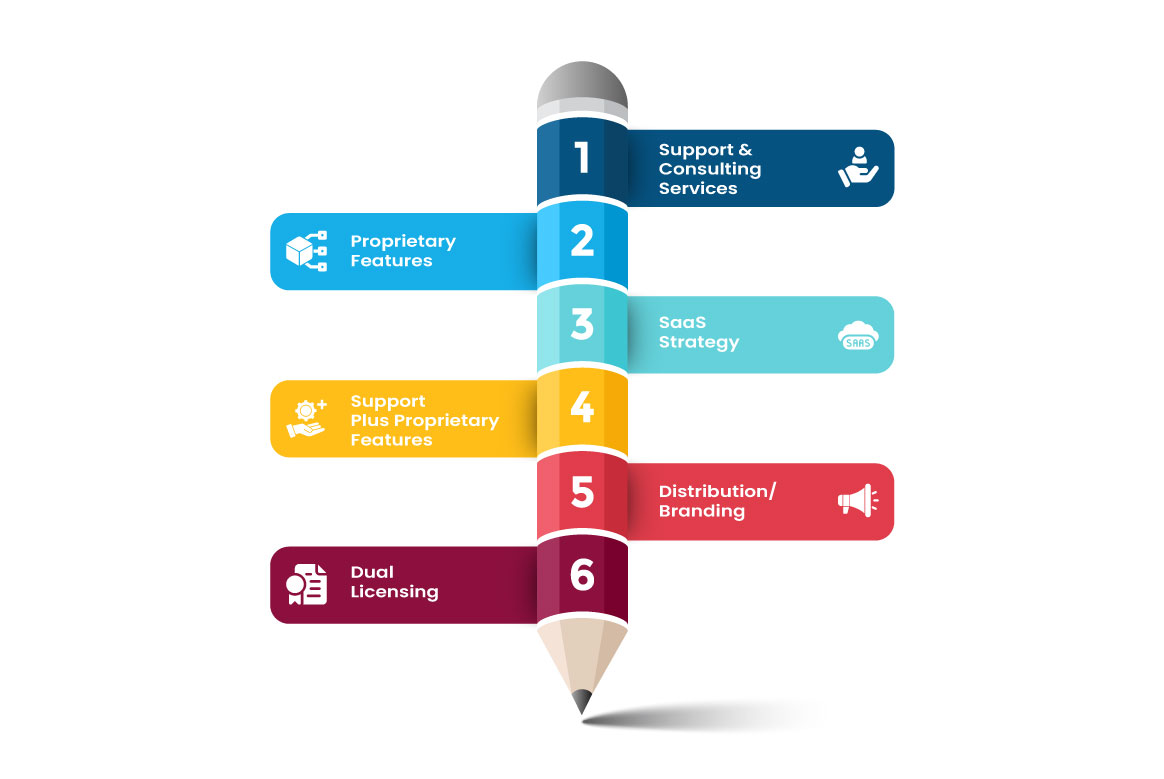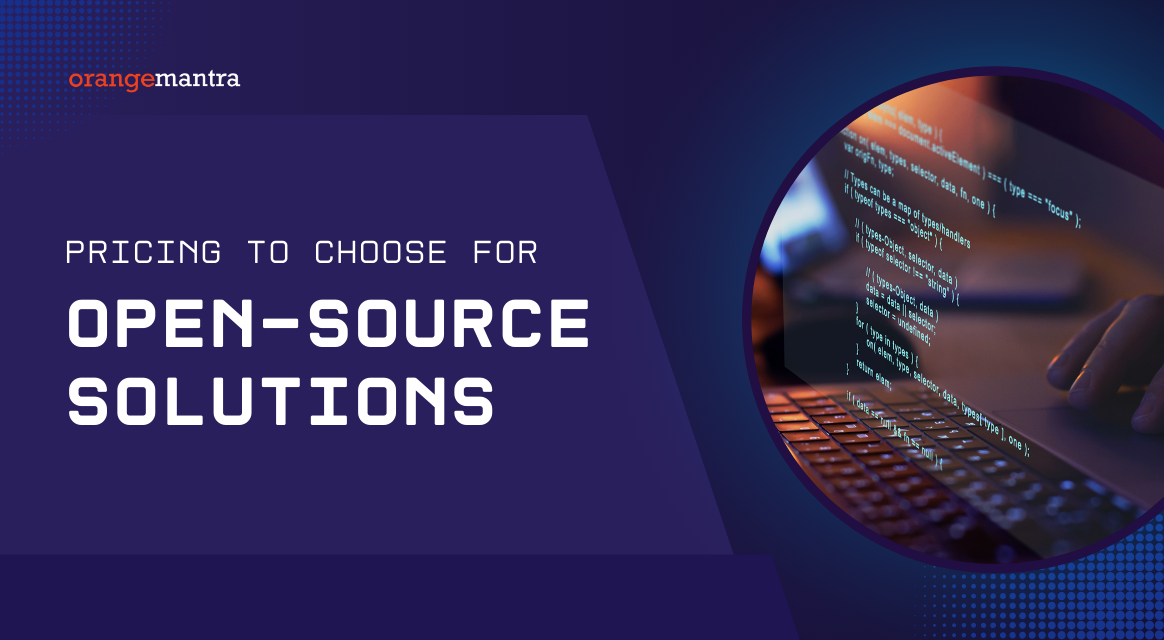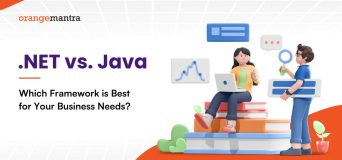The market is flooded with various types of applications. You have apps for almost everything in your daily life. However, the most common and loosely classified applications are open-source and closed. The open-source solutions not only generate money but also increase reputation. It is one of the major extended ways companies develop profit-oriented software.
And to gain the desired success you must how to implement the correct strategies for business. Getting the users to pay for your app is one of the basic strategies. But what’s more, what you can offer to your user is more valuable. This quick guide deals with the same questions for you to select the best strategy for business.
And it is continuously shaping the enterprise software architecture. At present, availing of open-source software development services is no longer a novel idea. Instead, it’s a necessity in place to develop and deploy strategic software in the fast-changing digital world.
If you have decided to develop feature-rich software that has a long-term implication, then choose to have open-source development.
Let’s have a closer look at what open source means and its pros and cons.
What is Open Source Software?
The term, “open source”, was coined within the software development industry. It means something that can be used by anyone, modified, and shared. It refers to the specific approach of developing feature-rich software while encouraging the values of transparency, collaboration, and community-oriented development.
In simple terms, open-source solutions are publicly accessible without finding any restrictions. Such software is secure, functional, and reliable to meet the diverse requirements of enterprises.
Unlike the proprietary software that can be legally copied, inspected, and altered by one single entity only, the open-source software has source code available to others. Developers can view, copy, and edit the same as per customized software development requirements.
Open-source software features to look at:
* Free software product
* Developers have access to the source code
* Add new features and fix errors
* Linux, LibreOffice, React, etc., are some of the popular open-source software
A look at the statistics of growing demand of Open-Source Software
There is no doubt in the fact that proprietary software providers dominate the market. Still, open-source software solutions have a fair share in the marketplace and, a rise in demand owing to the following few facts.
- The Open Source Software market is expected to reach a multimillion USD valuation by 2029, experiencing an unexpected CAGR during 2022-2029 compared to 2022.
- In 2022, the global Open Source solutions market was valued at USD 27728.89 million. By 2028, it is projected to reach USD 75209.66 million, with a CAGR of 18.09% during 2022-2028.
- The Program Development segment is predicted to hold the largest market share in 2027 among different product types.
- The increasing awareness of environmental issues and the need to reduce carbon footprints is driving the adoption of eco-friendly and renewable Open Source Software solutions.
What is So Great About Open Source Solutions?
Let’s look at some benefits of using open-source solutions.
1.Enhanced Security
Security is of utmost concern for every single organization. In this digital age, hackers are active in getting their hands on your company’s sensitive information. You need to use secure software solutions that protect the interest of the company like account details, employee information, and business details.
In that sphere, open source is less prone to security damage and abandonment. Developers can address security issues and fix all the vulnerabilities in a hassle-free manner.
2.Flexible solutions
The traditional software is confined within the limit and is difficult for users to scale up and upgrade. As a result, several companies get stuck within the sphere of suboptimal products.
Thus, to avoid the same, open-source solutions offer relaxed and flexible terms and conditions. Developers can easily access the same, change, or scale up as per the enterprise’s requirements. In short, IT professionals can tweak the source code of the software to meet the company’s needs and objectives.
3. Integrated Management
Enterprises need to integrate business software with their existing applications and workstations. This is required for stakeholders to have a better understanding of the business workflow and operations. Open-source software products integrate well with other systems of the organization and offer an unmatched level of performance.
4.Quality-Code
Proprietary software solutions are developed by a small team of professionals. Most of the time, they do not pay heed to the seriousness of the code. However, open-source software developers create effective, efficient, and reusable codes that can be used over time.
Strategies to follow for open source solutions success
Here are some steps to create a successful open-source solution.
Support & consulting services
If your open-source solutions project is quite popular, then you use it as a strategy to attract businesses. You can get fees to monetize the software. However, the application can gain initial traction but what about after the revenue stops? Even after this, your business needs money to scale up the software you need. You can easily monetize the software by getting many investors.
But you need customers to pay for the application to support the business application. This comes with another issue and that is the renewal support contract for the customers. So, the service-based business strategy can be a little tricky for the business. If you want to offer support or consult users, then it may not run for a long term. Some chances show that this can be a good strategy. But to support your business success dream you need to make up a stronger strategy.
Proprietary features
Also known as ‘open core’ which is quite tricky to master. So, you can easily scale up the revenue as you need. It consists of a traditional proprietary software model that revolves around the open-source project. The open-core business keeps the fundamental code base to develop an open-source project. And to integrate the commercial proprietary extensions in the application.
So, you must offer the proprietary features that clear up the idea for the users. And also removes the risk of undermining the open-source solutions. To make the proprietary feature for the open-source version isn’t as good as it seems. One of the popular strategies is enterprise policy compliance for the commercial feature. And easily can offer a competitive edge.
SaaS strategy
Another robust strategy to generate tones of money can help to scale up the business. It needs the expertise to run open-source software with a SaaS strategy. It takes expertise to run the software and to reach out to different users and they will pay for it. Not just the open-source solutions, it’s also to get the best expertise. It helps the users to scale it across the channels and lower the cost of different customers.
As we discussed open-core, the SaaS model doesn’t require any quality features. And the app development solutions to maintain the infrastructure of the software. You can easily build applications with features that keep these apps open-source. Moreover, the dark side to this approach your competitors can help to build open-source software. But you should focus on getting the best technological partner to make it with scaling cloud platforms.
Also Read : Open Source Vs Saas
Support Plus Proprietary Features
A business strategy that focuses on single things helps in the early stage of startups. But when combining two strategies to make up the business sea startups. Even these strategies help to monetize the open-source applications. The model packages integrate features and offer features with support services.
You can even employ a software development company to create a strategy to integrate proprietary features. It helps to mitigate support-based models to provide features to add enough value when you need more subscriptions. And many subscribers help to get individual instances of the short server. However, this needs to be renewed after the plans end.
Distribution/branding
It is one of the best strategies to reach out to multiple users. And it successfully monetizes the business you need wishful branding. Because investing in a branding strategy helps to increase the brand image. The key strategy is to build a high-quality distribution of open-source components. Plus, you need to plan the trademark that protects the brand from counterfeits.
Also, you can get open-source solutions with branding to reach out to a wider audience. Businesses need to get reliable app development solutions to help them strategize their branding. So, that they can help you create strategies that improve your branding.
Dual licensing
Lastly, this strategy has lost its popularity in the present time. Also, it just lost its charm to create licenses for drawbacks. And you easily attach a license with one and keep paying for others. People usually hate to see open licenses that constrain usage. Businesses can align licenses for open-source solutions for a wide variety of users. And it can help to gain the desired monetary gain of the business. Dual licensing is an incredible way to choose the apps for licensing.
Pricing to choose for open source solutions
No matter which strategies you choose for your business, you must select a price startup. But as a startup, you just charge the customers as per the value you put. Except the last two strategies that work just for the just the completeness of the list. And the startup can easily mix and match the strategies to gain the desired profits. If your company enters the marketplace with open-source solutions that transit with an open core. The closed or open-source business models can change as per the need. There is constant importance of quality and earning the desired gain with the open-source project.
What’s Not So Good About Open Source Software?
* Compatibility Issues: There are times when open-source solutions do not meet the compatibility factor. It could be due to the software not being optimized for a particular operating system or device.
* Less Official Support: The official support of open-source software solutions is limited and rare. But there is no such shortage of third-party providers to get adequate support.
* Diverse Interfaces: Unlike the proprietary solution, open-source software has a limited team of professionals working together as a collaborative effort. This makes open-source products clunky and confusing at times.
Pro Tip: Quality Software Leads to Your Business Success
A quality software product can make or break a business. Open-source solutions offer a great deal of flexibility, scalability, security, and a functional approach. Whether it’s retail, healthcare, travel, hospitality, or any other sector, open-source software solutions are available for all spheres of industries.
If you need any assistance regarding software development services, feel free to get in touch with OrangeMantra. It is a leading digital transformation company that offers the latest tools, technologies, and resources for your diverse requirements.
Conclusion: Open-source solutions play a crucial role in creating a brand image. But all you need to know is the right strategy to apply to your business. Or you can consult a software app development company for assistance.
Frequently Asked Questions
Is open-source software a feasible option?
This doesn’t just allow consumers to make their versions of the original product. With full access to the source code, developers and QA professionals can take apart the solution and make sure it doesn’t have any obvious faults or security flaws. Proprietary software works similarly, but it has one big limitation.
Does open source increase system security?
The main advantage of open-source software is that its source code is accessible for review by anyone. This means that anyone can examine the code to check if best practices were followed and to determine whether the coding is of high quality or not.
How is open-source software maintained?
Maintaining an open-source project often involves various repetitive tasks, such as scheduled maintenance, frequent updates to dependencies, continuous integration, and more. Many of these tasks can be automated because they are time-consuming, repetitive, and do not require much creativity.
Is open-source software user-friendly?
Open-source software may not be as user-friendly as closed-source software. If you encounter problems, getting technical support may be challenging, especially for less popular products. Closed-source software is more likely to be a well-developed, focused product with easily accessible customer support.
What is the underlying premise of open-source software?
Open source software (OSS) refers to software and source code that is made available under a license allowing anyone to use, modify, and distribute it, fostering continuous growth and development by programmers with diverse talents and viewpoints.


























